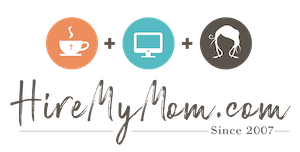4 Innovative Remote Work Hacks for Parents

With children at home, the line between work and family life can blur quickly. It’s important to find innovative ways to maintain productivity without sacrificing family time. With the right strategies, you can successfully work through the demands of both work and family, ensuring that neither is neglected.
Establishing a Flexible Routine
A structured yet flexible daily routine can be a game-changer for remote working parents. Visual planners can be particularly effective. These tools not only help in organizing your day but also provide a way for kids to understand and anticipate the day’s activities. Consider using colorful charts or digital planners that illustrate the schedule with icons or pictures, making it easy for even younger children to follow along. Digital planners in particular are helpful as they often let you share them with the whole family so everyone can stay up-to-date on what is happening.
Involving Kids in Your Work
Assign your children simple tasks related to your work. For example, they can help sort papers, organize office supplies, or even participate in data entry using kid-friendly software. Creating a mini ‘office’ space for them can also be beneficial with age-appropriate tasks. Equip this space with child-safe office supplies like paper, crayons, and stickers, so they feel part of your working world. You can also introduce fun activities such as “pretend meetings” where they get to voice their ideas on imaginary projects. This not only keeps them engaged but also helps them understand the concept of work.
Sharing Responsibilities
Sharing parenting duties with your spouse is essential when working remotely. A clear plan where both partners switch between work and childcare can reduce stress and create a more manageable day. If alternating isn’t possible, consider hiring a part-time helper or babysitter for a few hours each day — if it is an option, you can also reach out to local family members that might want to take the kids for a little bit each day. This arrangement allows you to focus on your work, knowing your children are being well cared for. Another option is to coordinate with other parents in similar situations. Organizing a “childcare swap” where you take turns watching each other’s kids can provide much-needed breaks. Plus, the kids love this because it’s a playdate for them!
Self-Care and Managing Stress
Incorporate short, regular breaks throughout your day to unwind and clear your mind. Simple activities like stretching, breathing exercises, or a quick walk around the block can significantly reduce stress levels. Ensure you’re getting enough sleep and eating balanced meals; proper nutrition and rest are foundational for sustaining energy and focus.
Engage in hobbies or activities that bring you joy and relaxation. Whether it’s reading a book, gardening, or pursuing a creative project, dedicating time to your interests can rejuvenate your spirit. Exercise is another powerful tool for managing stress; even a short daily workout can boost your mood and improve mental clarity.
Connecting with friends or family members, even virtually, can provide emotional support and a sense of community. Don’t hesitate to seek professional help if you feel overwhelmed. Lastly, establish boundaries to prevent work from encroaching on personal time. Set specific work hours and stick to them as much as possible. Communicate these boundaries to your employer and family to ensure everyone respects your need for downtime. By prioritizing self-care, you’ll be better equipped to handle the demands of both work and family life.
Balancing remote work with the demands of family life can feel challenging, but remember that flexibility and creativity are your greatest allies. Embrace the opportunity to integrate your children’s schedules with your own, making room for both productivity and quality family time. Celebrate the small victories and learn from any setbacks, adjusting your strategies as needed. Do you have balancing work and the kids down to a science? We would love to hear your tips on how you do it!









